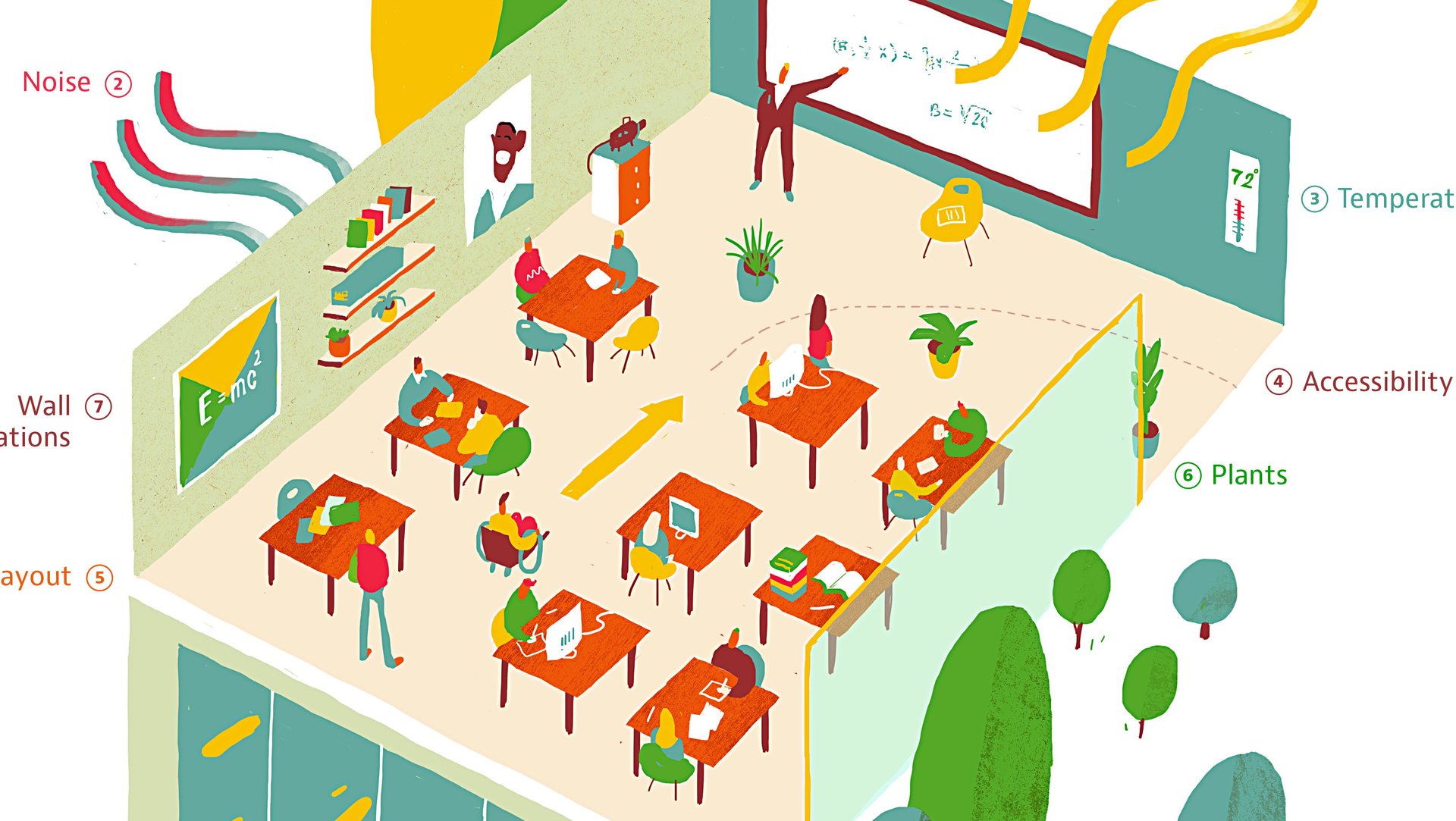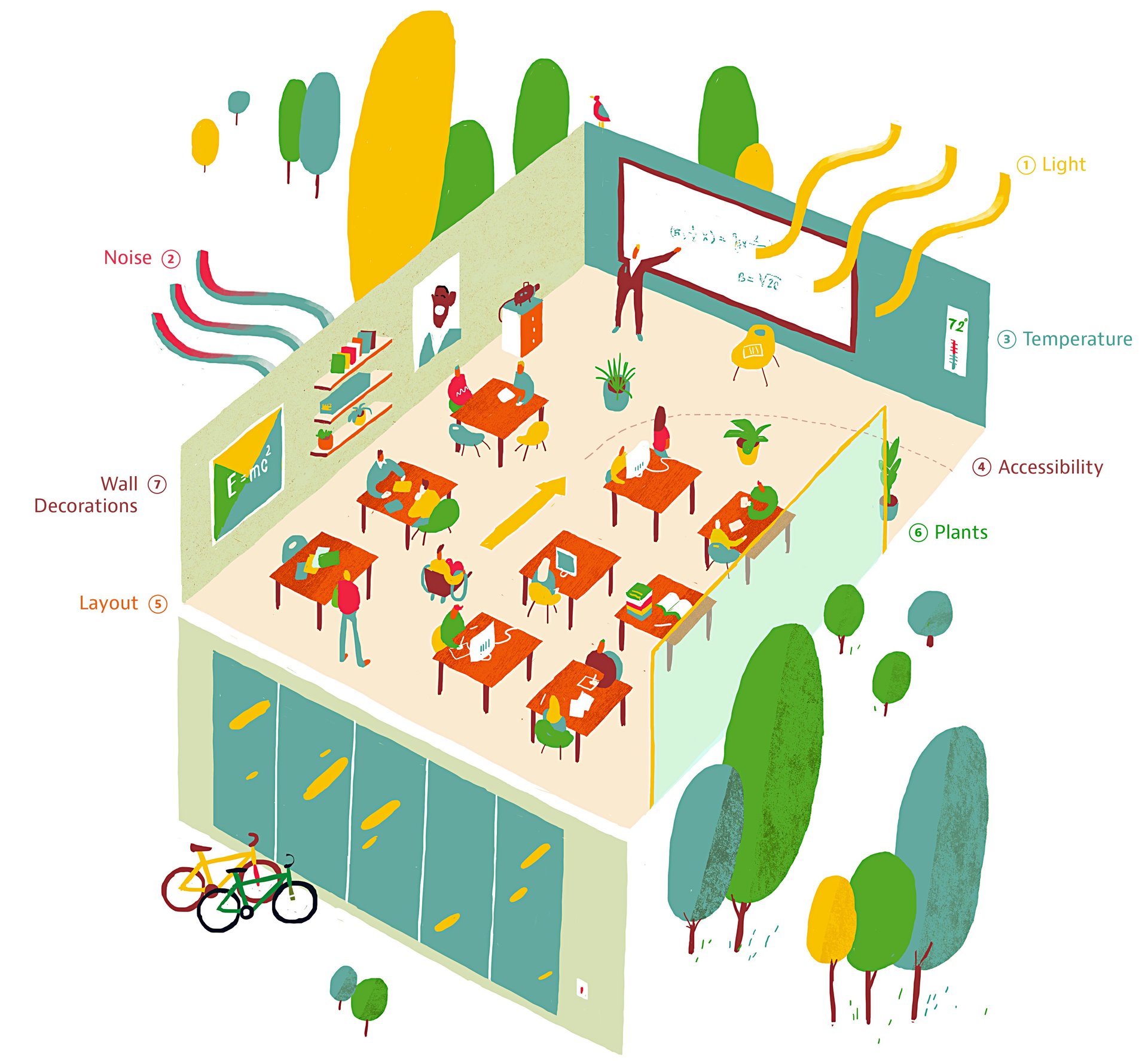This is what the ideal learning environment looks like, according to science
My public high school didn’t have air conditioning. Come June, when temperatures in New York soared past 90 degrees, it was a chore to pay attention in calculus. Who could focus on integrals when sweat was dripping down my back? So many kids started taking refuge in the cool guidance counselor’s office that, on some hot days, she refused to see students altogether.


My public high school didn’t have air conditioning. Come June, when temperatures in New York soared past 90 degrees, it was a chore to pay attention in calculus. Who could focus on integrals when sweat was dripping down my back? So many kids started taking refuge in the cool guidance counselor’s office that, on some hot days, she refused to see students altogether.
From the first day of kindergarten to high school graduation, children spend almost 12,000 hours inside a school building. As such, it may not be surprising to learn that the physical classroom environment can have profound effects on a student’s academic performance, sense of belonging, and self-esteem.
Recently, researchers at the University of Washington and UC Berkeley, led by Sapna Cheryan, combed through scientific literature to find the physical components that mattered the most to students.
They found that a building’s physical infrastructure (e.g., its natural light and air quality) play a significant role in a student’s scores and overall concentration.
In addition, objects placed in a classroom can implicitly signal the degree to which a student is valued. For instance, one experiment found that women in computer science classrooms with stereotypically masculine objects, like Star Trek posters, expressed less interest in pursuing a computer science career than women in classrooms with nature posters.
To be sure, some of the ideal attributes of a classroom may not always be attainable. If a classroom window faces a brick wall, it will be challenging to give students access to much sunlight. But many of the findings can, according to Cheryan et al, be implemented in mere hours for little money.
This study got us thinking: what would the Platonic ideal classroom look like, illustrated? The result, below:

Here are some of the main features of this room:
- Light: Daylight is critical — and even better if there are natural elements outside the windows. According to Cheryan et al: “In a study with more than 2,000 classrooms in California, Washington, and Colorado, students who were exposed to a larger amount of daylight in their classroom had higher math and reading test scores than students who were exposed to less daylight in their classroom (2%-26% higher, depending on school district), even after statistically controlling for student population characteristics such as socioeconomic status and race.” If a classroom doesn’t have a window, Cheryan suggested that it use full spectrum fluorescent lightbulbs to mimic sunlight. And a coat of paint can always help brighten a room.
- Noise: Not surprisingly, silence really does help with concentration. Students in classrooms near airplane flight paths consistently score worse on reading tests than those in quiet neighborhoods.
- Temperature: Students apparently learn best in classrooms between 68°F and 74°F. At least 14% of US schools report inadequate heating. Similarly, poor air quality can hinder learning.
- Accessibility: Of course, for any classroom to be considered inclusive, it must provide adequate structures for students with disabilities — including elevators, ramps, and clear pathways.
- Layout: Turning desks into clusters, according to one study, helps women feel more at ease in a classroom. That said, clusters can also increase the number of distractions for students.
- Plants: The presence of plants has been shown to have a calming effect on people, regardless of age.
- Wall decorations: Extremely busy walls have proven to be distracting, though posters with animals, nature, or inspirational quotes can have a positive effect on students. However, objects that subtly signal that certain groups do not belong (e.g., posters of leaders who are all white men) can have a harmful effect on students that do not belong to that group. Posters displaying disrespectful stereotypes of a culture (e.g., Native American mascots, like the Chief Wahoo Cleveland Indians logo) have been linked to lower feelings of self-esteem.